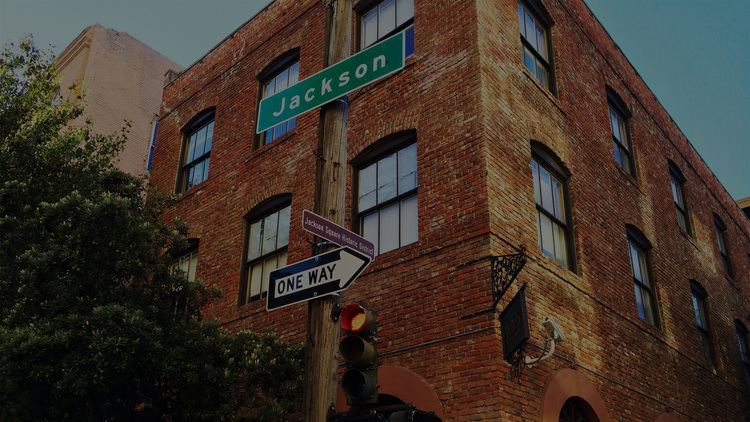Area 6 ha | NRHP Reference # 71000186 Added to NRHP 18 November 1971 | |
 | ||
Location Roughly bounded by Broadway on N, Sansome St. on E, Washington St. on S, and Columbus Ave. on W, San Francisco, California Hotels Columbus Residence, Hotel San Joaquin, Prestige Resorts Restaurants Cotogna, Bix, Kusakabe, Doc Ricketts, Barbarossa Lounge | ||
Jackson Square is a neighborhood in San Francisco, California, bounded by Broadway, Washington St. on the south, Columbus Ave. on the west and Battery St. on the east with any number of nearby satellite buildings and residents outside the bounds that truly belong to the neighborhood.
Contents
Map of Jackson Square, San Francisco, CA, USA
History
Jackson Square encompasses the northeastern part of the former (and notorious) Barbary Coast.
Character
Jackson Square Historic District retains its character as one of the oldest commercial neighborhoods in San Francisco. Though in some cases extensively altered during seismic retrofit, the collection of three-story brick buildings found on the narrow streets and alleys offer a bright glimpse into the California Gold Rush that gave San Francisco its start. Buildings on the north side of Jackson between Montgomery and Sansome retain cast iron shutters as protection against fire, but when the city burned, in one case, a warehouse's contents turned out to be more significant in saving the building in the 1906 earthquake and fire:
If, as they say, God spanked the town for being over-frisky,Why did he burn the churches down and spare Hotaling's Whiskey?Walking tours regularly assemble for the sights and recounting of history, even as the neighborhood changes with dramatic new development and commercial instability fueled by high rents. With few vacancies, there is plenty of evidence of neighborhood vitality. This is the interior designer's district (predating the San Francisco Design Center), where the well-heeled order elegant furnishings, wall coverings, carpets, prints and the like most often only through the trade, and occasionally at retail. With twenty-five furniture and decorative art galleries, advertising agencies, architects and industrial or graphic designers still survive in the neighborhood, and law firms have offices in many of the prime locations.
Watering holes and restaurants and clubs dot the streets and alleyways, and many of these are historic institutions in themselves. Recently, there has been a resurgence of these businesses, opening up to breathe new life in to the area.
